Amaryllis (
Hippeastrum) is a tropical bulb that has become a popular indoor winter plant. It’s easy to see why: those gloriously big, bright flowers. Whether red, pink, apricot or white, those trumpet-shaped blooms can make any space more dramatic and colorful.
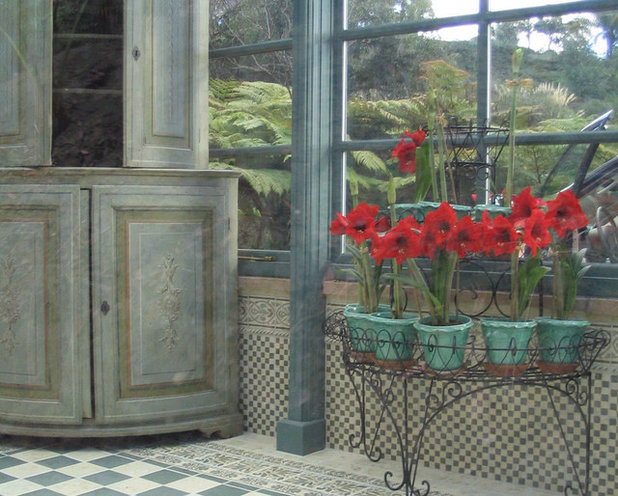
Filmore Clark
These large bulbs are very easy to grow, and the flowers last for weeks. Around mid-January an amaryllis that was in bloom in late December will finish flowering. Many people don’t realize that even though the flowers are gone, the plant isn’t dead. If you give the bulb the conditions it needs, it will grow and rebloom for years.
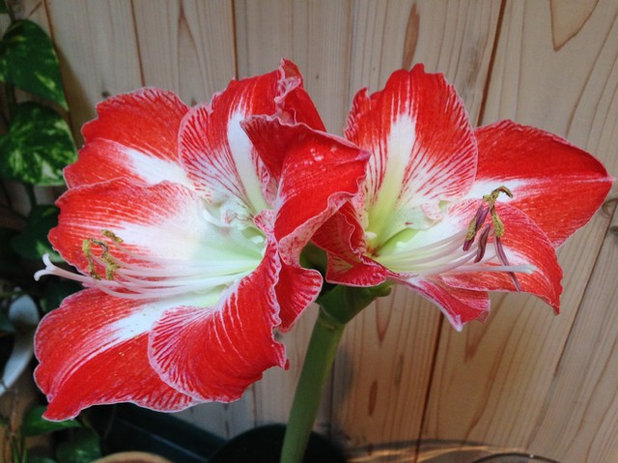
Therese Ciesinski
Keep in mind that the bulb you bought at the store was conditioned to bloom five to six weeks after you bought it, and that it had never flowered before. The timing of the reblooming process means that it’s almost impossible to get the plant back in bloom by next December. However, it
will bloom in late winter, right around the time you’re happy to see any flowers!
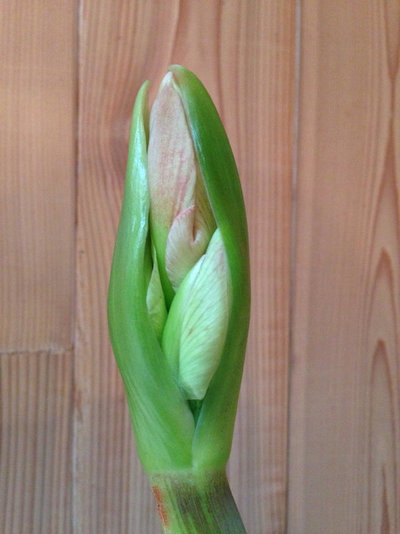
Therese Ciesinski
An amaryllis in bud or in flower needs to be kept cool and out of direct sunlight or even bright light. The plant prefers temperatures around 60 degrees Fahrenheit, but
you might not, so keep it in the coolest place that is practical. Don’t overwater; the soil should be moist, not soggy.
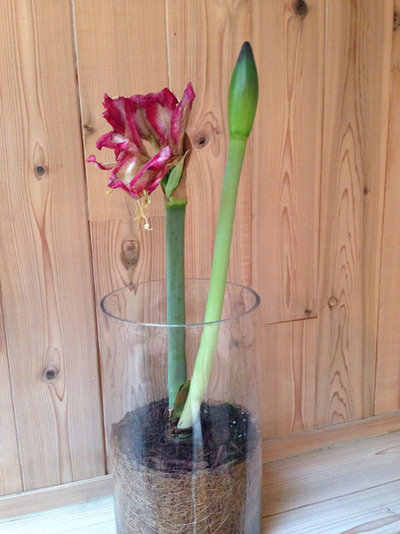
Therese Ciesinski
A good-size amaryllis bulb usually puts up two, sometimes three, flower stems. Cut each stem back once its flowers die (see below).
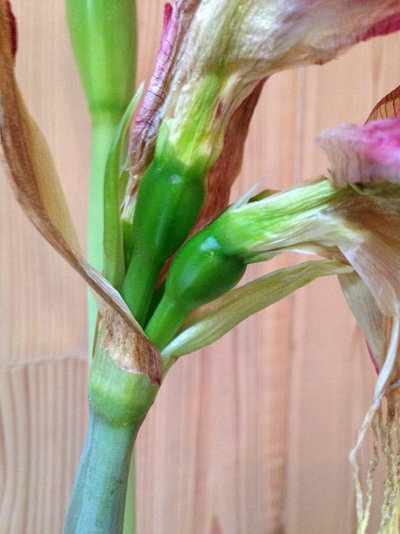
Therese Ciesinski
As the flowers fade, they will start to go to seed, as in this photo. Seed making requires energy — energy that should go back into the bulb, which is why you should cut off the stem, ideally before the seeds begin to form.
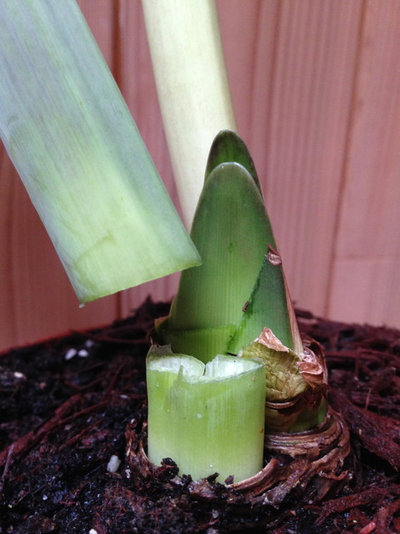
Therese Ciesinski
Cut the stem near where it emerges from the bulb as soon as the flowers have completely faded. Don’t worry if the cut stalk “weeps” liquid; this is simply an indication that the bulb was well watered.
After the bulb has completely finished flowering and the stems have been cut off, move the plant into bright light. Direct sunlight from a south-facing window is ideal. By this time the plant should be producing long, bright green leaves. Don’t cut them off! The leaves will absorb sunlight, which will feed the bulb. Keep the soil around the bulb moist at all times. Fertilize once a month with an organic liquid fertilizer.
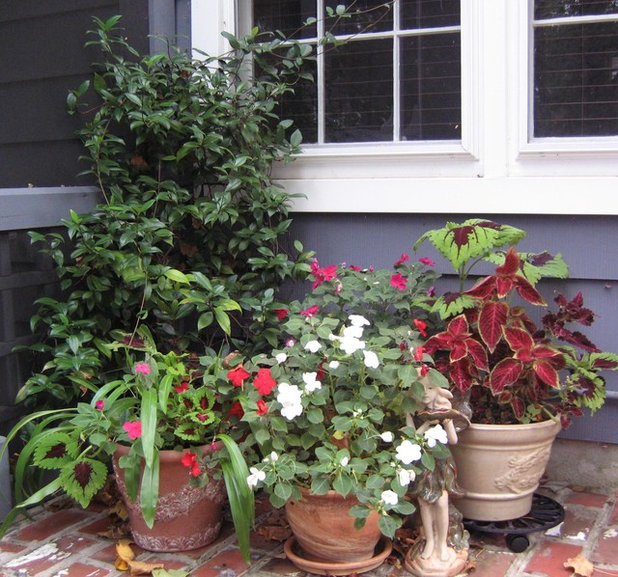
EASYdesigns
The secret to getting an amaryllis to rebloom is to move it outdoors in late spring and leave it there until fall. Gradually move the pot outside to a sunny spot as the weather warms, taking it in during cold spells and at night. Amaryllises can’t survive freezing temperatures, so only once the chance of all frost is past can they stay outside 24/7. In hot weather don’t let the soil dry out, even if that means watering every day. Fertilize every two weeks. The plant should continue to produce leaves all summer.
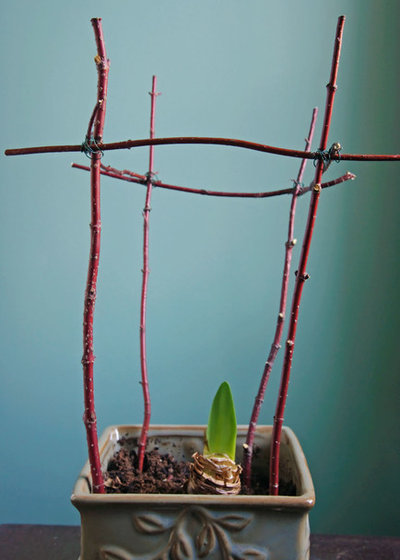
Barbara Pintozzi
In early summer repot the bulb in a slightly bigger container, only about an inch or two larger in diameter, to allow for more root growth, recommends Hans Langeveld, co-owner of Longfield Gardens, a mail-order nursery in Lakewood, New Jersey.
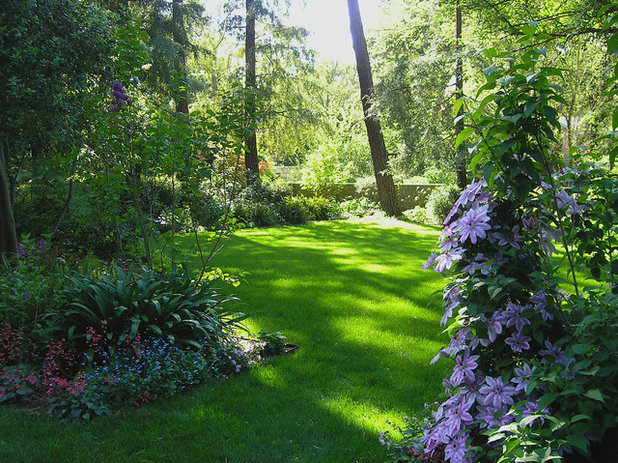
AFLA-Landscape Design
A more foolproof method, and the one Langeveld prefers, is to take the bulb out of its container and actually plant it in the garden, “where it can produce more leaves to bring more reserves back into the bulb,” he says. Once the soil temperature is 70 degrees, plant the bulb in an uncrowded spot, at least 15 inches away from other plants, where it will receive no more than four to six hours of sun a day. Keep the soil moist and fertilize once a month.
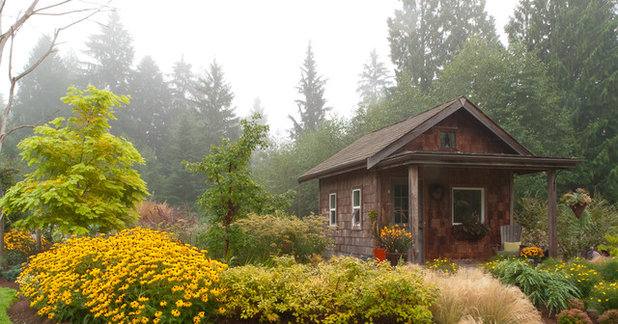
Le jardinet
The bulb can stay in the garden until the end of September or the first week of October, but at the first hint of frost, dig it up and bring it inside.
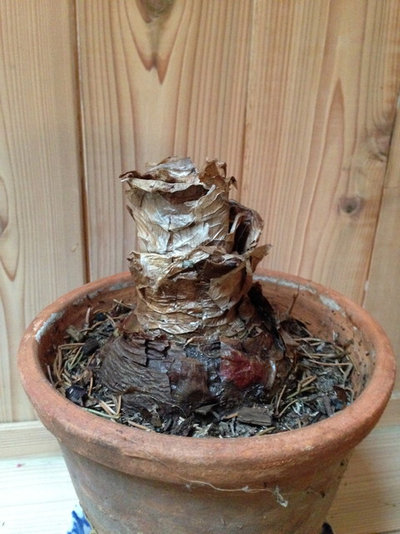
Therese Ciesinski
In order to rebloom, the plant must have a dormancy period of eight to 12 weeks. Indoors the amaryllis needs little water and cool (about 50 degrees), dry, dim conditions. Cut way back on watering, don’t fertilize, and keep the bulb away from light. A dark, dry basement or closet is ideal. The long leaves will turn yellow and fade, and can eventually be pulled off. The bulb may look dead, but it isn’t.
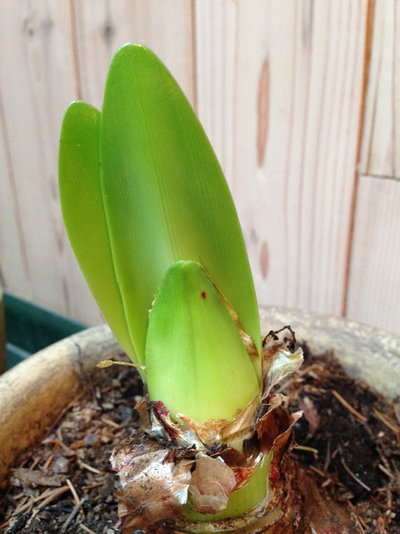
Therese Ciesinski
In eight to 12 weeks, you should see green growth — a new flower stem — peeking out from the bulb. Put the pot in a sunny, warm spot and keep the soil moist.
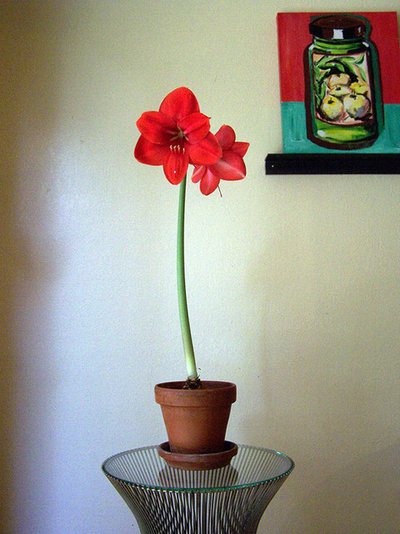
XOJY
Once the flowers open, move the plant back to dimmer light and cooler temps, and begin the cycle all over again.
More: Indoor Winter Gardens for Cheerier Days





